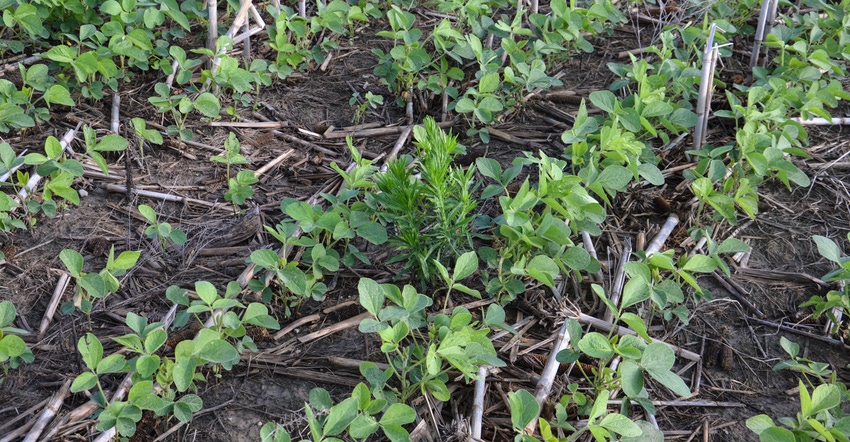
It’s a safe bet that the Soybean Watch ’19 field isn’t planted yet due to weather delays. Hopefully it will be soon.
This isn’t the first time that Soybean Watch has followed a late-planted field. Two years ago, in 2017, the field was planted June 6. That field will be used for comparison purposes to this year in this article.
Steve Gauck scouts the Soybean Watch field and makes observations that should apply to your own fields. He’s a sales agronomist for Beck’s, based at Greensburg, Ind. Beck’s sponsors Soybean Watch ’19.
The first thing Gauck did in 2017 on his first visit to the field after soybeans were up was take stand counts. He counts plants per row. You can also use a hula hoop; see below for more details.
“Knowing what stand you have in various parts of the field is important as you begin to plan out the year,” he says. “With soybeans, if the stand was very subpar, you might still have a chance to replant if you catch a stand problem early enough.”
Slug issues
Two years ago, in a moist spring, the issue in the Soybean Watch field was slugs. The field was no-tilled into cornstalks. The only remedy for slugs is replanting, Gauck says. They didn’t show up nearly as much in 2018. The jury is still out this year.
Gauck did his stand counts in the areas of the field hit hardest by slug feeding. The soybeans were planted with a split-row planter in 15-inch rows.
“I came up with 80,000 plants as a minimum in the hardest-hit area of the field,” Gauck recalls. “Plant distribution was fairly even.”
Using the Purdue University Corn and Soybean Field Guide, he determined that 80,000 plants per acre should still deliver 96% of full yield potential if the stand was solid-seeded, and 100% if it was in 30-inch rows. Assume 15-inch rows would be somewhere in between.
Plus, in another chart, he determined that if the farmer replanted by June 20, he would have only obtained 83% of original yield potential, even with a full stand. Leaving the stand was a no-brainer. The field yielded 50 bushels per acre, even after also suffering through a 6-inch rain in July.
Hula hoop counts
You can also use a child’s hula hoop to take stand counts. The 2019 edition of the Purdue field guide suggests rolling a hula hoop at random in at least five spots within the field picked at random. Count plants inside the hoop in each location. Compute an average number of soybean plants per hoop.
You need to know the hoop diameter. Next, go to the table provided in the manual. If you have an older guide, you may need to calculate the population using a fudge factor.
Here’s an example from the table. Assume your hoop is 36 inches in diameter. You roll it five times. The average count is 16 plants per hoop. Go down to 16 on the far-left side and down the 36-inch diameter column until the two lines intersect. Your estimated population is 99,000. Leave the stand!
Suppose you find 13 plants per hoop. That’s 80,000 plants per acre. Gauck would still recommend leaving the stand based on the June time frame.
About the Author(s)
You May Also Like




